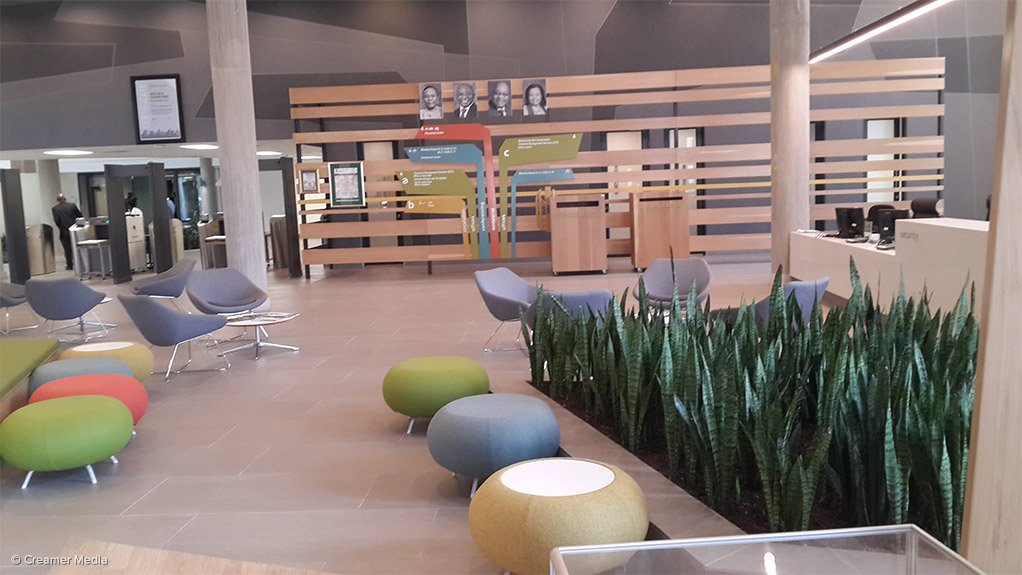President Jacob Zuma has officially opened the Department of Environmental Affairs’ (DEA’s) new green head office, in Pretoria, describing it as an event that would usher in a new green-focused era for the South African construction industry.
“[This building] will now lead by example and, with its opening today, we are showing a bold commitment to lower emissions, as well as [reaffirming] our commitment to the green economy.
“The DEA is literally walking the green talk,” he said at the launch ceremony on Friday.
The design and the construction of the 30 654 m2 headquarters, dubbed Environment House, was completed in alignment with green building specifications, resulting in it becoming the third building in the country, and the first government building to be awarded a 6-star Green Star South Africa rating from the Green Building Council of South Africa (GBCSA).
“We congratulate the department for being a leader [in the green building sector] and demonstrating that it is possible to design a building that treads lightly on the environment, while yielding tangible economic benefits,” GBCSA CEO Brian Wilkinson noted.
GREEN GAINS
Government described Environment House as an investment designed to meet the green output specifications outlined in the Climate Change Policy, which emphasised the use of sustainable materials, promoted urban greening, and encouraged energy and water efficiency.
Among the “trendsetting” green features of the building, overall energy consumption will be limited to a yearly maximum of 115 kWh/m2, while solar-generated power would provide between 15% and 20% of the building’s energy needs.
The building boasted an energy efficient two-stage evaporative air conditioning system, while automatic temperature sensors would open and close the windows depending on the position of the sun and the temperature.
“The northern parking area hosts a large concentrated [solar] photovoltaic panel, which tracks the sun during the day and supplies power to the electric vehicle (EV) charging station for the DEA’s EV pilot project,” the department outlined.
Harvested rainwater would be used in the restrooms and to irrigate the gardens, resulting in a 30% reduction in municipal water use compared with buildings of a similar size.
In addition, lighting efficiencies that maximised natural light sources, making use of compact fluorescent lights and an individual motion sensor light switching system, had been installed.
The design of the building, meanwhile, ensured efficient staff movement and a reduced reliance on lifts, while all building materials, finishes, furniture and equipment were environment-friendly and largely locally sourced.
MANAGEMENT AGREEMENT
Construction of the building had, thus far, cost some R653-million, but would ultimately culminate in the expenditure of some R8-billion over 27 years as part of a facility management contract with Imvelo Facilities Management – a joint venture between Old Mutual Property and the Dijalo Property Group.
The contract would include building maintenance; the cleaning of the facility; energy and utilities supply; waste management; conference facilities; furniture management; parking management; pest control; internal plant maintenance; telephone equipment; fire and emergency provisions; landscape maintenance and a helpdesk facility.
Construction on the project started in July 2012 and was completed by way of a public–private partnership agreement between the DEA and Imvelo Concessions – a consortium comprising Old Mutual, Kagiso Tiso Group, Wiphold and Aveng-Grinaker LTA.
Architectural firm Boogertman & Partners were responsible for the design of Environment House.
EMAIL THIS ARTICLE SAVE THIS ARTICLE
To subscribe email subscriptions@creamermedia.co.za or click here
To advertise email advertising@creamermedia.co.za or click here











